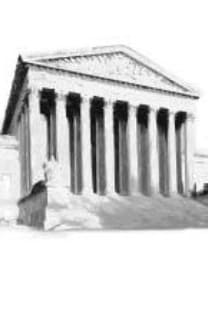Postmodern theory and postmethod condition: New tasks and roles for English language teachers
Postmodern kuram ve yöntem sonrası durum: İngiliz dili öğretmenleri için yeni görev ve roller
___
- ARIKAN, A. (2006). Postmethod condition and its implications for English language teacher education. Journal of Language and Linguistic Studies. 2(1), 1-11.
- BAUDRİLLARD, J. (1988). Selected writings. Stanford: Stanford University Press.
- CANDLIN, C. N. (1987). Towards task-based learning. In C. N. Candlin & D. Murphy (eds.). Lancester practical papers in English language education. Language learning tasks. (5-22). Englewood Cliffs. N. J.: Prentice Hall.
- CHOMSKY, N. (1970). BBC interviews with Stuart Hampshire. Noam Chomsky’s view of language. In: Lester, M. (ed.). Readings in applied transformational grammar. New York: Holt & Rinehart: 96-113.
- CLARKE, M. A. (1994). The dysfunctions of the theory/practice discourse. TESOL Quarterly, 28, 9-26.
- EDWARDS, R., & R. Usher. (1994). Postmodernism and education. London: Routledge.
- FINCH, A. E. (2004). Supplementing secondary EFL textbooks. Gyeongbuk secondary English education, XVI, 96-107.
- FINCH, A. E. (2006). Task-based supplementation: Achieving high school textbook goals through form-focused interaction. English Teaching 61(1), 41-65.
- FREEMAN, D., & Johnson, K. E. (1998). Reconceptualizing the knowledge-base of language teacher education. TESOL Quarterly, 32, 447-464.
- HUTCHEON, L. (1989). The politics of postmodernism. London: Routledge.
- JOHNSON, K. E. (Ed). (2000). Teacher education. Alexandria, VA: TESOL.
- KOHN, A. (1992). No contest: The case against competition. New York: Houghton Mifflin Company.
- KUMARAVEDIVELU, B. (1994). The postmethod condition: (E)merging strategies for second/foreign language teaching. TESOL Quarterly, 28, 27-48.
- KUMARAVEDIVELU, B. (2003). Beyond methods: Macrostrategies for language teaching. New Heaven, CT: Yale University Press.
- KUMARAVEDIVELU, B. (2006). Understanding language teaching. From method to postmethod. Mahwah, New Jersey: Lawrence Erlbaum Associates.
- KUMARAVEDIVELU B., & BEAN, M. (1995, April). The practicum in TESOL: A dialogic model. Paper presented at the 29th Annual TESOL Convention, Long Beach, CA.
- LEAVER, B. L., & J. R. Willis. (eds.). (2004). Task-based instruction in foreign language education: Practices and programs. Washington D.C. :Georgetown University Press.
- O’FARRELL, C. (1999). Postmodernism for the initiated, in D. Meamore, B. Burnet, & P. O’Brien (eds.). Understanding education: Context and Agendas for the New Millenium (11-17). Sydney: Prentice Hall.
- PHILLIPSON, R. (1992). Linguistic Imperialism. Oxford: Oxford University Press.
- POSTMODERNISM. (2009). In Encyclopedia Britannica Online. Retrieved May 5, 2009 from http://www.britannica.com/postmodernism
- PRABHU, N. S. (1990). There is no best method-why? TESOL Quarterly, 24, 161-176.
- ROGERS, C. R. (1969). Freedom to learn. Colombus, OH. Charles, E. Merrill Publishing Co.
- SARUP, M. (1993). An introductory guide to post-structuralism and postmodernism. London: Harvester Wheat Sheaf Published.
- STERN, H. H. (1992). Issues and options in language teaching. Oxford: Oxford University Press.
- WARD, G. (2003). Teach yourself: Postmodernism. London: Hodder & Stoughton.
- WILLIS, J. (1996). A framework for task-based learning. London: Longman.
- WOODS, D. (1996). Teacher cognition in language teaching. Cambridge: Cambridge University Press.
- Yayın Aralığı: 2
- Yayıncı: Bursa Uludağ Üniversitesi
Descartes'ın epistemolojisi ve foucault'nun eleştirisi: Akıl ve akıl dışılık bağlamında bir eleştiri
'Language Metaphor' and its implications in George Berkeley's philosophy
Tarihin mi sonu yoksa ideolojilerin mi?
Postmodern theory and postmethod condition: New tasks and roles for English language teachers
Elif Sezen SAMANCI, Arda ARIKAN
Heidegger's approach to Being: Man as the fundament of ontology
Aşkınsal çıkarsama'nın ontolojik temellendirilişi
Popper'ın Marx'ın tarih, toplum ve siyaset görüşünü eleştirisi üzerine bir inceleme
